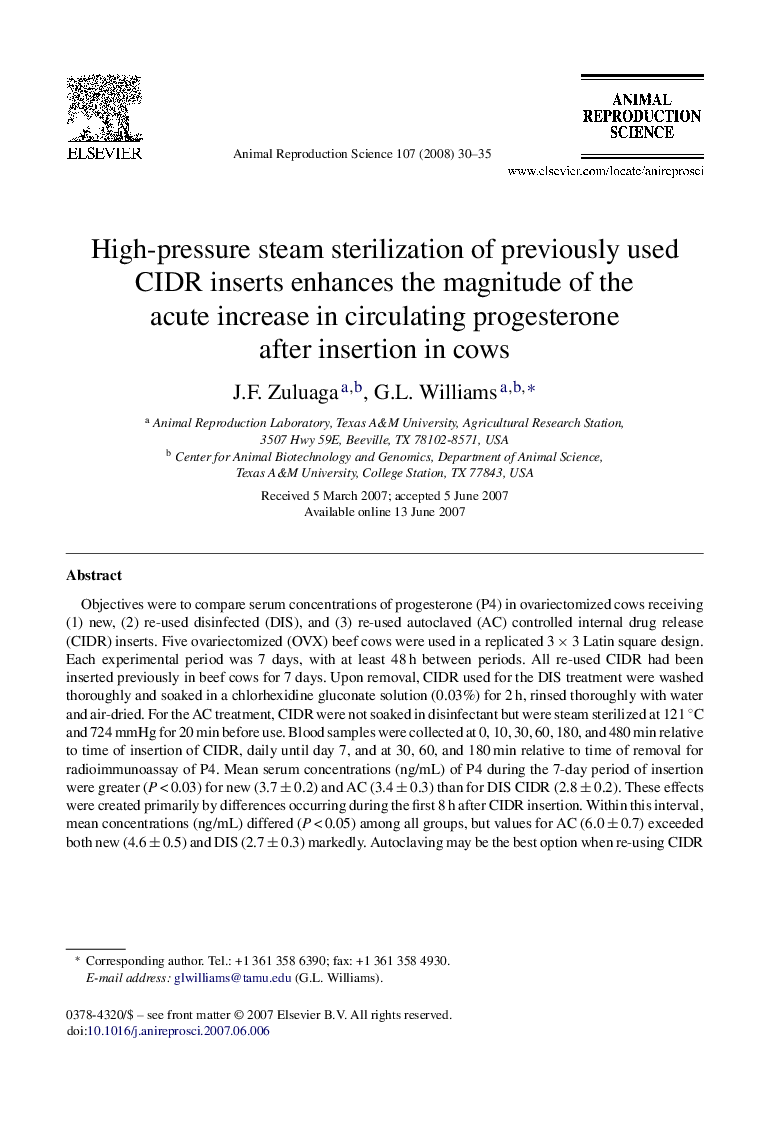| Article ID | Journal | Published Year | Pages | File Type |
|---|---|---|---|---|
| 2074451 | Animal Reproduction Science | 2008 | 6 Pages |
Objectives were to compare serum concentrations of progesterone (P4) in ovariectomized cows receiving (1) new, (2) re-used disinfected (DIS), and (3) re-used autoclaved (AC) controlled internal drug release (CIDR) inserts. Five ovariectomized (OVX) beef cows were used in a replicated 3 × 3 Latin square design. Each experimental period was 7 days, with at least 48 h between periods. All re-used CIDR had been inserted previously in beef cows for 7 days. Upon removal, CIDR used for the DIS treatment were washed thoroughly and soaked in a chlorhexidine gluconate solution (0.03%) for 2 h, rinsed thoroughly with water and air-dried. For the AC treatment, CIDR were not soaked in disinfectant but were steam sterilized at 121 °C and 724 mmHg for 20 min before use. Blood samples were collected at 0, 10, 30, 60, 180, and 480 min relative to time of insertion of CIDR, daily until day 7, and at 30, 60, and 180 min relative to time of removal for radioimmunoassay of P4. Mean serum concentrations (ng/mL) of P4 during the 7-day period of insertion were greater (P < 0.03) for new (3.7 ± 0.2) and AC (3.4 ± 0.3) than for DIS CIDR (2.8 ± 0.2). These effects were created primarily by differences occurring during the first 8 h after CIDR insertion. Within this interval, mean concentrations (ng/mL) differed (P < 0.05) among all groups, but values for AC (6.0 ± 0.7) exceeded both new (4.6 ± 0.5) and DIS (2.7 ± 0.3) markedly. Autoclaving may be the best option when re-using CIDR inserts because it creates greater concentrations of P4 immediately after insertion and reduces maximally the risk of disease transmission.
